There is nothing better than biting into a crunchy piece of freshly fried chicken. This is my go-to recipe, and once you’ve tried it, you’ll know why. The skin is so crispy and flavorful, while the meat is moist and juicy. All you need are a few everyday ingredients to make crispy chicken, and you probably already have all the ingredients at home. It’s a recipe that the whole family will love, hands down!
It might seem intimidating to deep fry at home, but it’s surprisingly easy. This recipe is fool-proof, and with my step-by-step photos down below, you’ll have the crispiest fried chicken in no time! Once you’ve nailed deep-frying chicken, take it up a notch by making homemade Churros or Funnel Cakes.
WHAT YOU NEED TO MAKE THIS RECIPE
Chicken — you can purchase a whole chicken and cut it up, so you have various cuts, or you can buy your favorite bone-in, skin-on cuts.
Buttermilk — soaking the raw chicken in buttermilk helps tenderize it. If you do not have buttermilk, you can make your own homemade buttermilk.
Cornstarch — the secret to extra crispy chicken is mixing cornstarch with flour. The coating will be dense if it only contains flour, so the cornstarch helps cut through it and gives you light crispy skin. The cornstarch also absorbs less oil than flour, so it helps keep the fried chicken from being too greasy.
HOW TO MAKE FRIED CHICKEN
1. In a large bowl, combine buttermilk, hot sauce, and salt.
2. Add the chicken to the buttermilk and toss to combine. Cover or seal and let stand for 30 minutes, or for juicier chicken, refrigerate for several hours or overnight.
3. Add flour, cornstarch, onion powder, salt, black pepper, and cayenne in a shallow dish.
4. Whisk together.
5. Remove chicken pieces from brine, and shake off excess buttermilk. Dredge in the flour mixture, making sure each piece is well coated.
6. Working in batches, carefully place chicken in the hot oil.
7. Fry until golden brown, and they register 165F on a meat thermometer when inserted into the thickest portion.
8. Remove from the oil and let drain on the wire rack. Serve hot.
PRO TIPS FOR MAKING THIS RECIPE
- A thermometer is a great tool to help get the temperature of the oil right. If the oil is too hot, the exterior of the chicken will burn before the interior cooks.
- A Dutch oven is ideal for frying. The cast iron will help the oil temperature from fluctuating too much and help keep the cooking even. If you do not have one, use a large heavy-bottomed pot with high sides to avoid splatter.
- You can reuse the frying oil at least one to two more times by allowing it to cool and straining it through a fine-mesh sieve.
- Feel free to season the buttermilk however you’d like. Try adding dried herbs along with the hot sauce.
- If cutting a whole chicken or using breast pieces, cut each breast in half crosswise before brining and dredging (this is how the chicken equals 10 pieces). This will help it cook faster and more evenly, keeping the meat juicy and the crust from getting too brown.
- Dredging the pieces and letting them rest for a bit before frying ensures the breading sticks to the chicken and doesn’t immediately fall off when placed in the fryer.
- Always allow the fried chicken to drain on a wire rack before serving to allow excess oil to drip off.
FREQUENTLY ASKED QUESTIONS
What does soaking chicken before frying do?
Buttermilk contains lactic acid, which breaks down some proteins and tenderizes the chicken without causing it to be tough due to its acidity. The buttermilk also helps keep the chicken moist and adds a delicious tangy flavor. It’s not a step you should skip!
How long do you soak the chicken in buttermilk before frying?
If you are in a rush, you can soak the chicken in buttermilk for 30 minutes. However, you should soak the chicken for a couple of hours or overnight for the best flavor. I would not go over 24 hours of marinating the chicken.
Why isn’t my chicken crispy?
If your fried chicken is soggy, your oil might not be hot enough. If the oil temperature is too low, it’ll take too long for the chicken to fry, and it’ll absorb extra oil, leaving the skin soggy and greasy. Make sure to use a thermometer to make sure the temperature is correct. Also, avoid adding too many pieces of chicken into the oil at once. When you overcrowd the pot, it lowers the temperature of the oil.
What is the best oil for frying?
Vegetable oil, canola oil, olive oil, peanut oil, and sunflower oil are great for deep frying. These oils are neutral in flavor and have a high smoke point. If you use an oil with a low smoke point, the oil will burn as the fat breaks down, imparting an unpleasant taste to your chicken.
How do I store and reheat leftovers?
Once the chicken has cooled, store the fried chicken in an airtight container. They’ll last in the fridge for up to 4 days. To reheat, I recommend using an air fryer or oven to keep the skin crispy. The microwave will work in a rush, but the skin won’t maintain its crunch.
If you’ve tried this Fried Chicken recipe, then don’t forget to rate the recipe and let me know how you got on in the comments below, I love hearing from you!

Fried Chicken
Video
Equipment
- Large Pot
- Candy thermometer
Ingredients
For the Brine:
- 1 whole chicken 4- to 5-pound, cut into pieces (or 8 of your favorite bone-in chicken pieces)
- 1 quart whole buttermilk (960mL)
- 3 tablespoons hot sauce optional
- 1 tablespoon salt
For Dredge and Frying:
- Peanut or vegetable oil for frying
- 3 cups all-purpose flour (360g)
- ½ cup cornstarch (80g)
- 1 tablespoon onion powder
- 1 tablespoon salt
- 2 teaspoons ground black pepper
- 1 teaspoon cayenne pepper optional
Instructions
Brined Chicken:
- In a large bowl or ziptop bag, combine chicken pieces, buttermilk, hot sauce, and salt. Toss to combine. Cover or seal and let stand for 30 minutes, or for juicier chicken refrigerate for several hours or overnight.
Dredge and Frying:
- When ready to fry, fill a Dutch oven with 3 inches of peanut oil. Place a candy or deep-fry thermometer in the oil and place over medium heat until it reaches 340F. Place a wire rack inside a rimmed baking sheet.
- While the oil is heating, in a shallow dish, whisk together flour, cornstarch, onion powder, salt, black pepper, and cayenne.
- Remove chicken pieces from brine, and shake off excess buttermilk. Dredge in the flour mixture, making sure each piece is well coated. Place on plate or baking sheet. Let dredge pieces rest until oil is ready. (For an extra crunchy crust, lightly coat chicken again in the dredge when ready to fry.)
- Working in batches, carefully place chicken in the hot oil. Fry until golden brown and they register 165F on a meat thermometer when inserted into the thickest portion, about 7 minutes for wings, 12 minutes for drumsticks and thighs, and 15 minutes for breast pieces. Remove from the oil and let drain on the wire rack. Serve hot.
Notes
- A thermometer is a great tool to help get the temperature of the oil right. If the oil is too hot, the exterior of the chicken will burn before the interior cooks.
- A Dutch oven is ideal for frying. The cast iron will help the oil temperature from fluctuating too much and help keep the cooking even. If you do not have one, use a large heavy-bottomed pot with high sides to avoid splatter.
- You can reuse the frying oil at least one to two more times by allowing it to cool and straining it through a fine-mesh sieve.
- Feel free to season the buttermilk however you’d like. Try adding dried herbs along with the hot sauce.
- If cutting a whole chicken or using breast pieces, cut each breast in half crosswise before brining and dredging (this is how the chicken equals 10 pieces). This will help it cook faster and more evenly, keeping the meat juicy and the crust from getting too brown.
- Dredging the pieces and letting them rest for a bit before frying ensures the breading sticks to the chicken and doesn’t immediately fall off when placed in the fryer.
- Always allow the fried chicken to drain on a wire rack before serving to drip off excess oil.





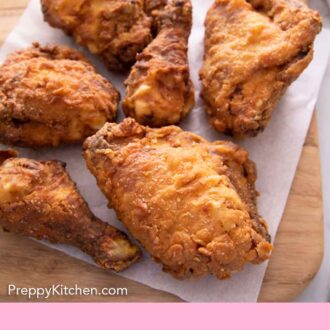



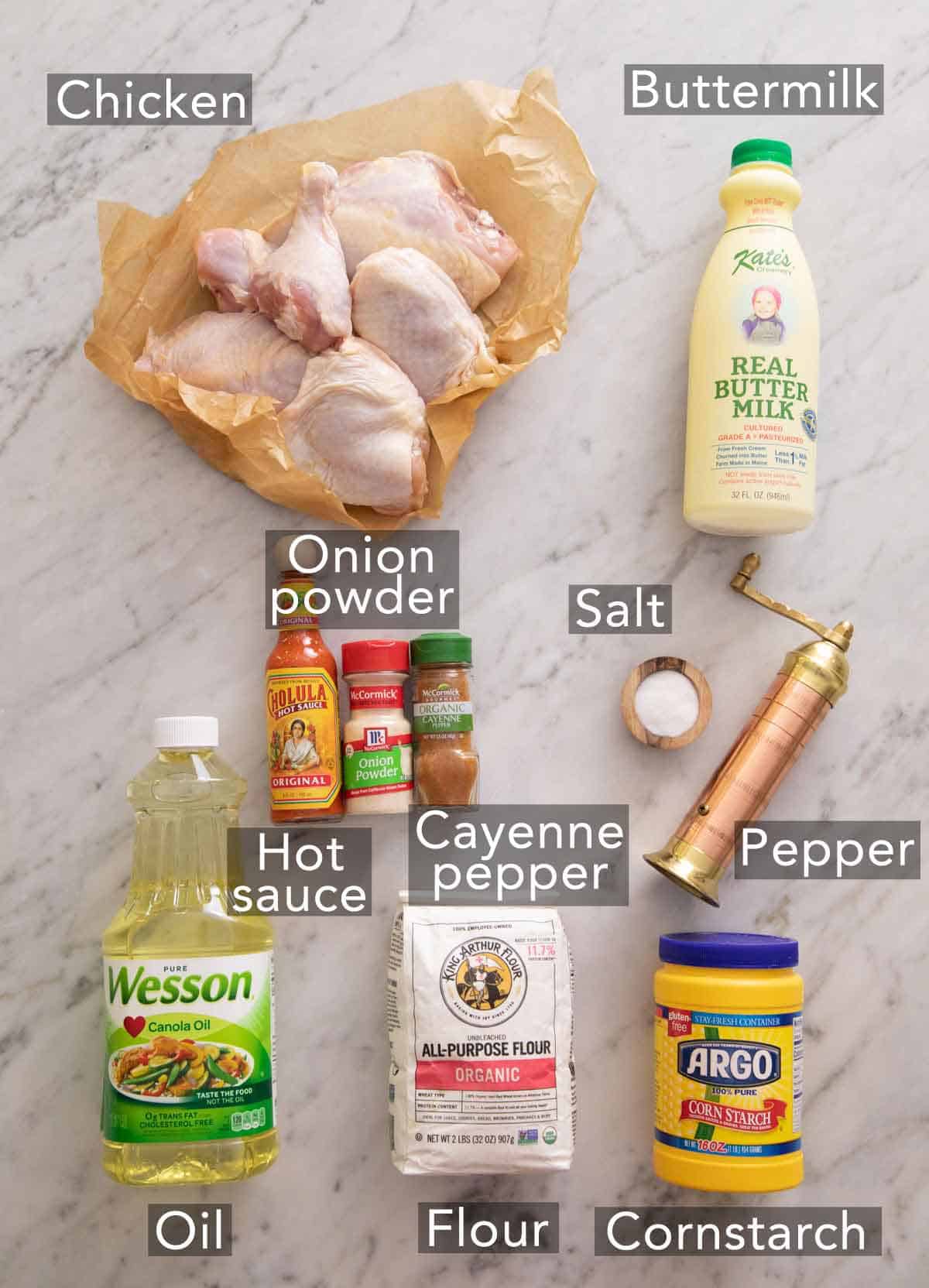
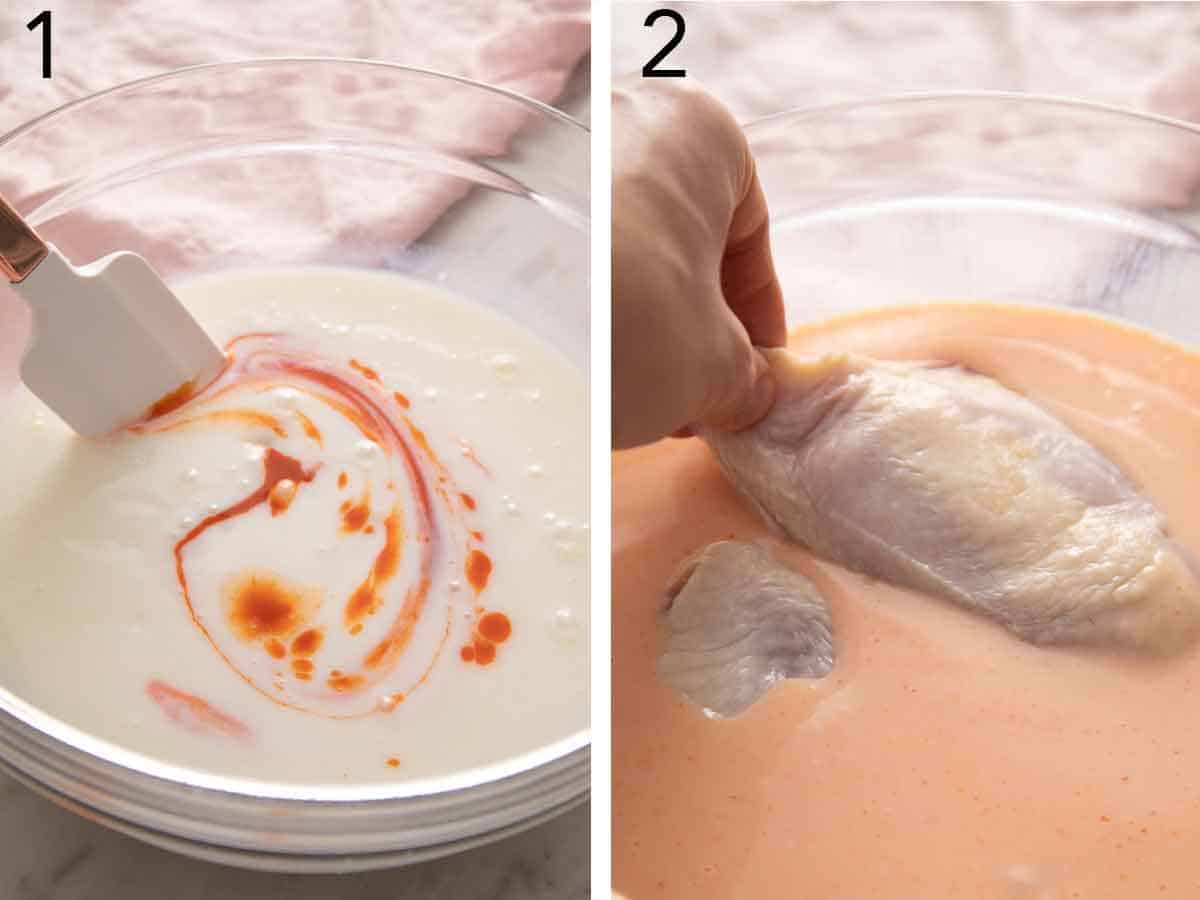
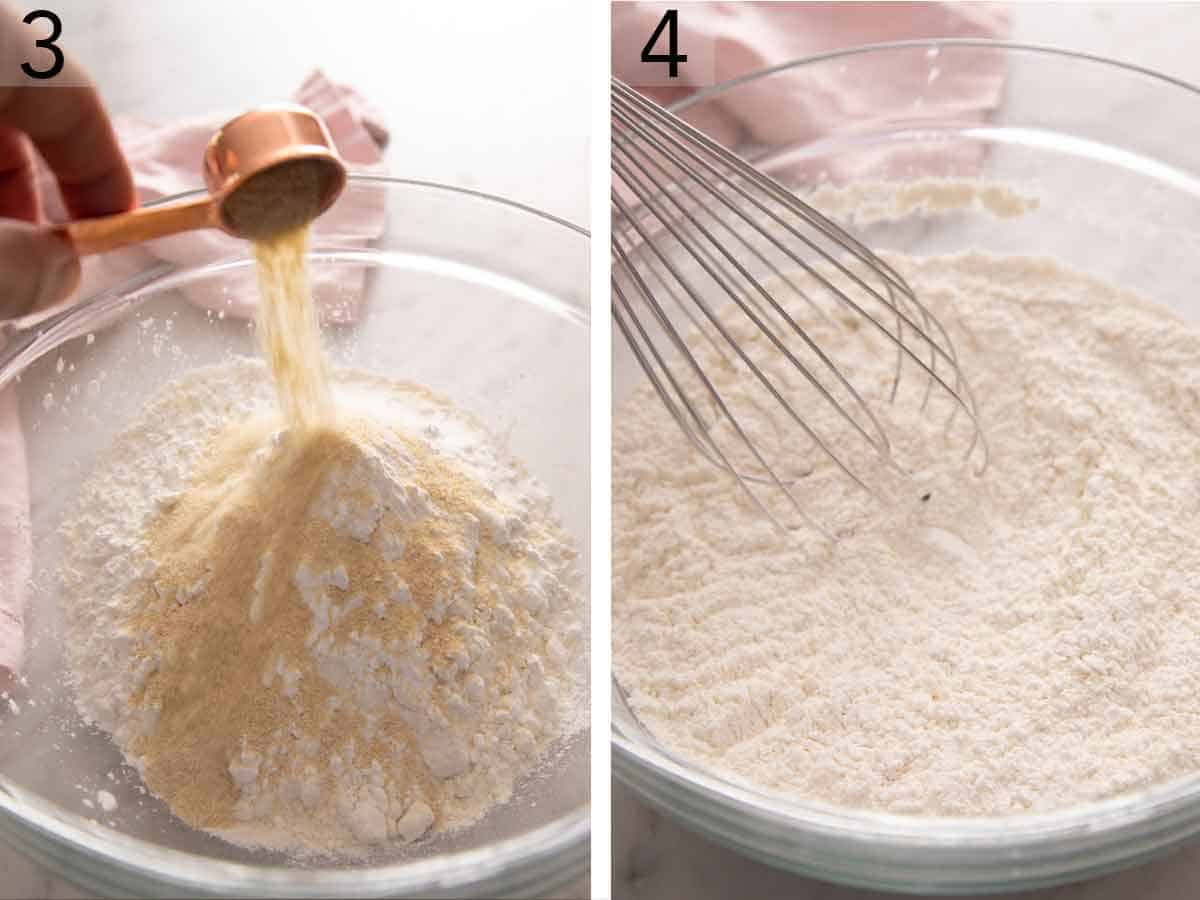
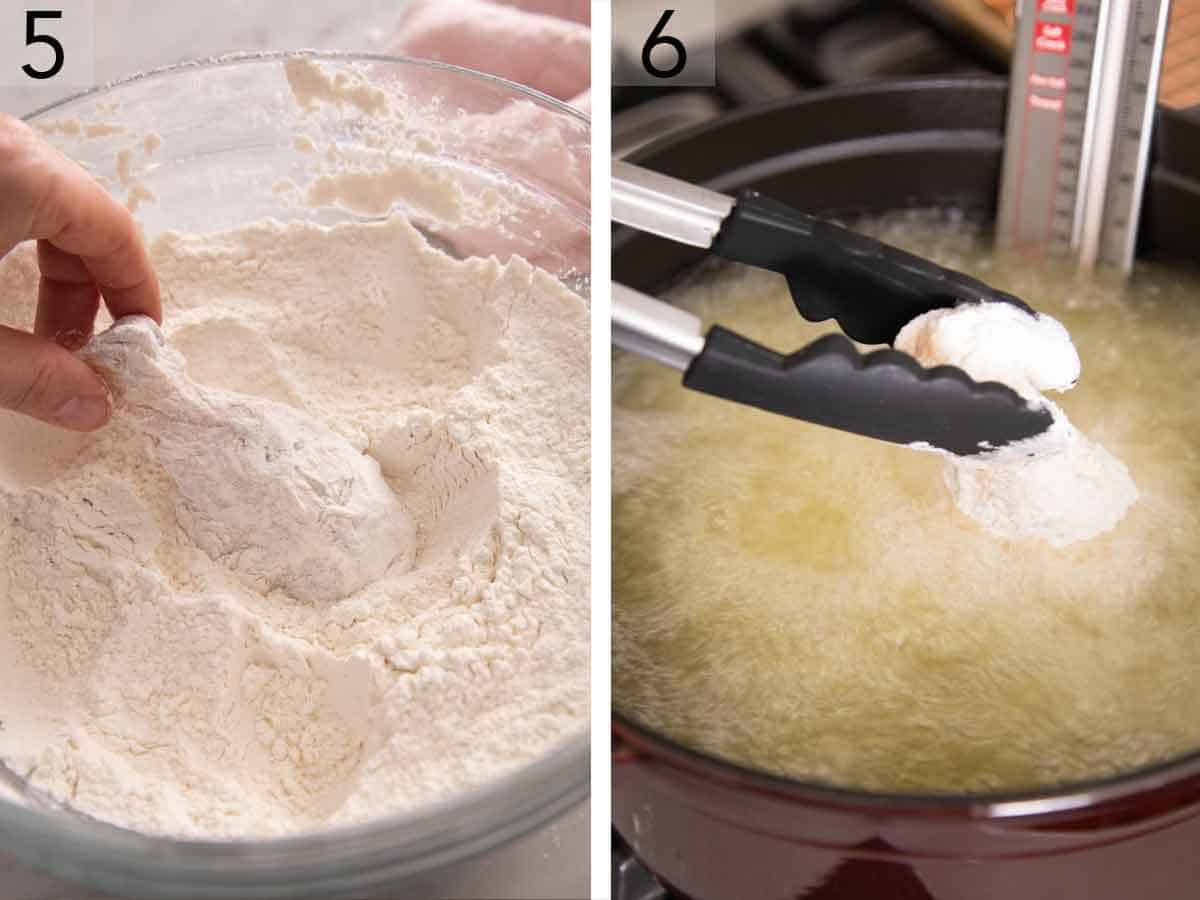

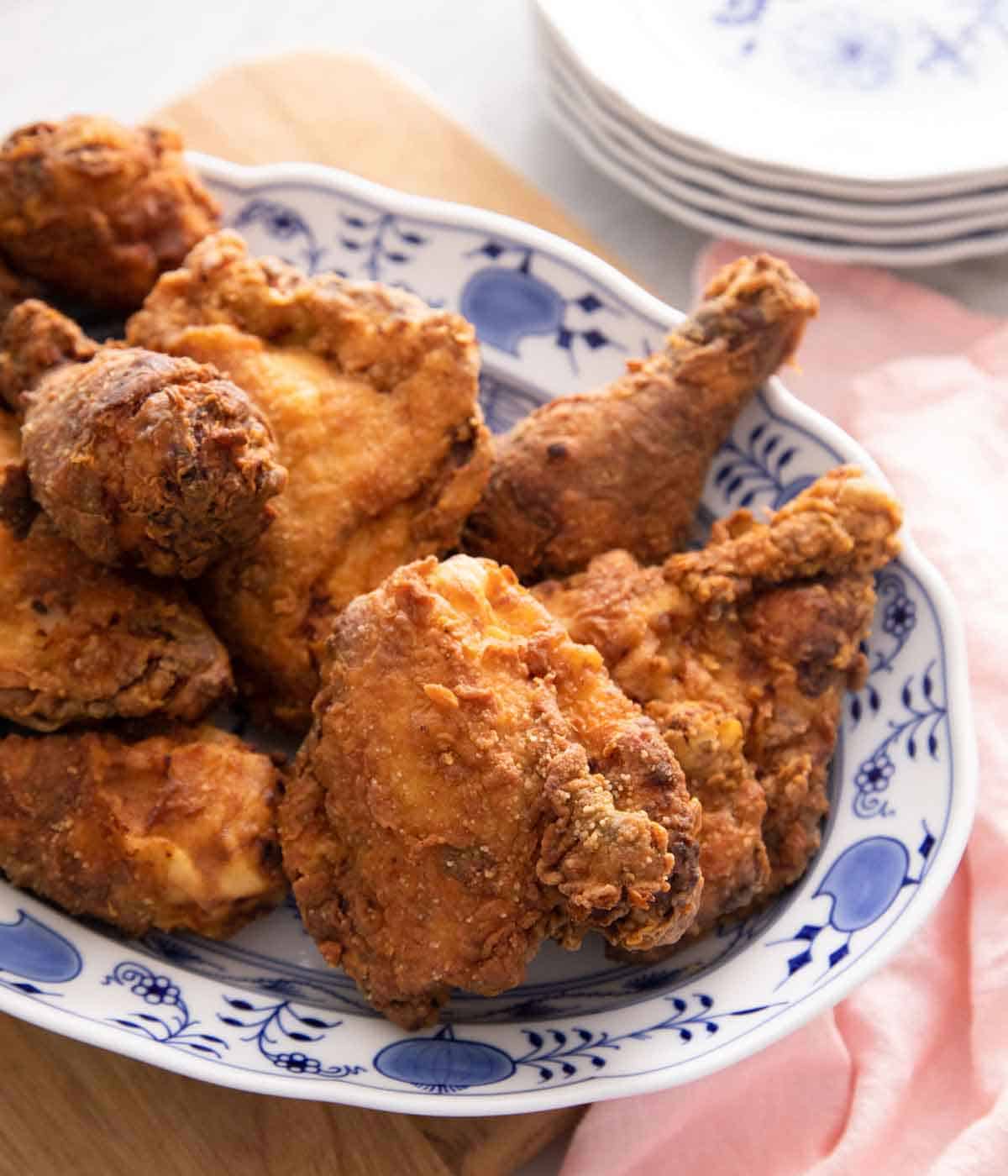
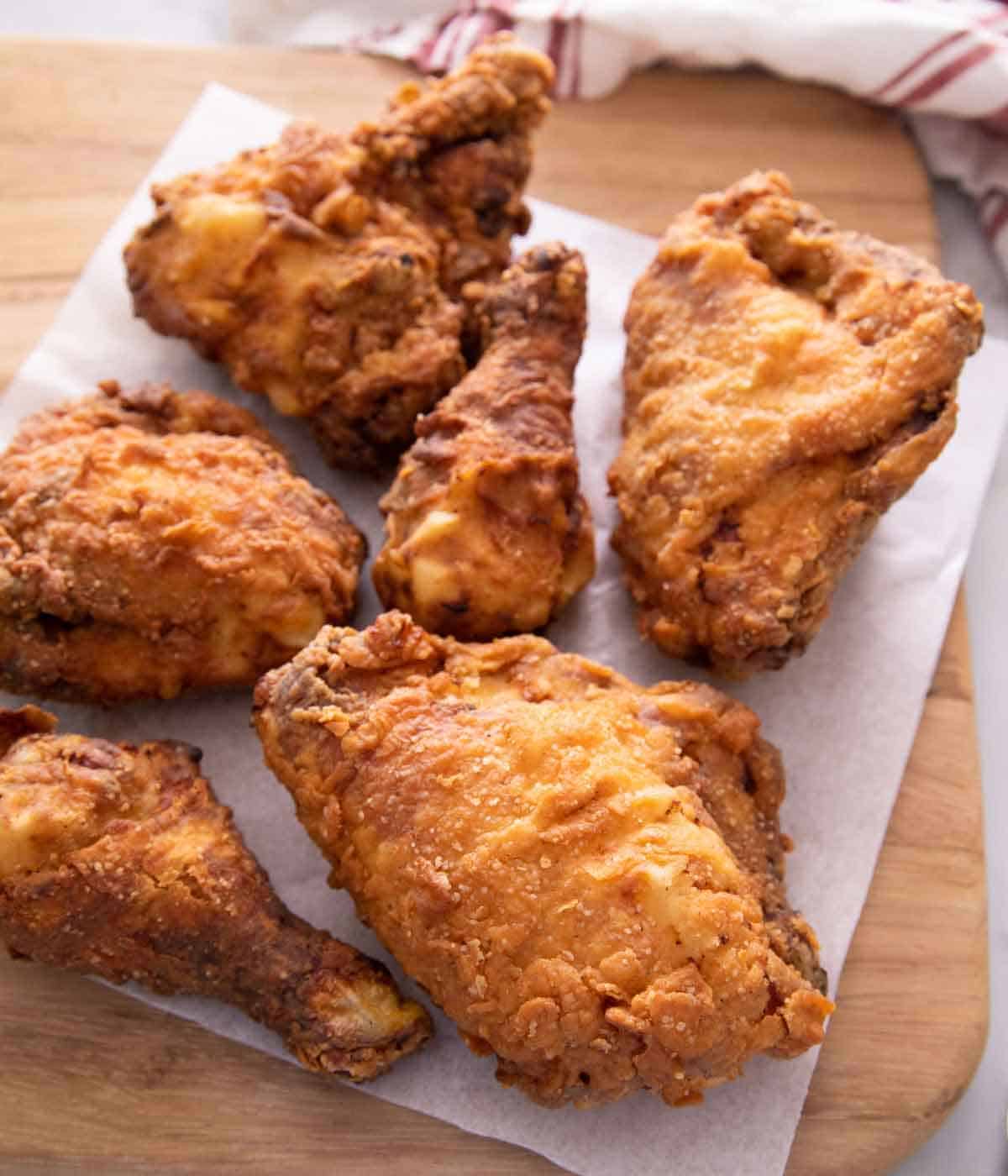
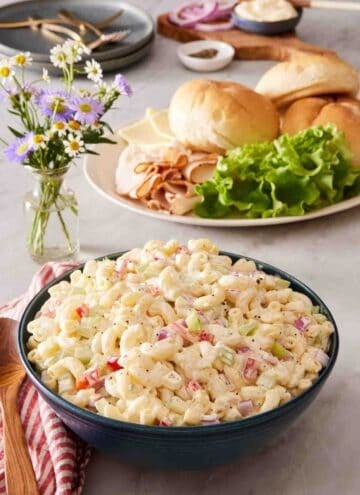



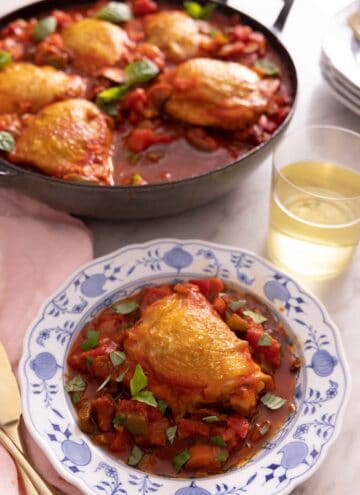

Donna A Pollock says
So DELICIOUS, great chicken, and just the right amount of spice for us too. Thank you John for another great recipe.
I made your Biscuits and you recipe for Mashed Potatoes too to go along with my Chicken…What a wonderful delicious dinner this was…